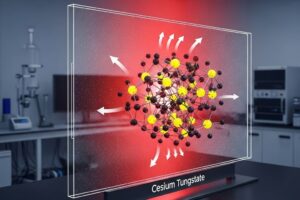Polyurethane dispersion (PUD) is the main category of water-based industrial paint.
Polyurethane dispersion (PUD) is composed of polyurethane particles dispersed in the water phase by an organic solvent or dispersant. It has good film-forming properties and can provide excellent appearance and hardness.
PUD has no residual isocyanate and can be formulated with low VOC. It can be used more safely than solvent-based polyurethanes.
Despite these advantages, the use of PUD is still limited by its cost, which is higher than traditional acrylic emulsions. In order to reduce the cost, PUD can be used with acrylic emulsion through physical blending or chemical reaction to obtain polyurethane-acrylic hybrid dispersion PUA.

Unfortunately, they all contain many carboxyl group -COOH, which affects the chemical resistance of the coating.
By adding a crosslinking agent to improve the crosslinking density of the paint film, the painting can be used for high-performance wood coatings.
Increasing the cross-linking density of the coating can form a barrier that is difficult to permeate, preventing moisture and chemicals from contacting the bottom layer, resulting in an increase in the chemical resistance of the coating.
Crosslinking reaction can also increase adhesion and scratch resistance, resulting in tougher coatings and better overall performance.
Crosslinking reaction can usually be obtained by using a cross-linking agent, such as polyisocyanate, aziridine, polycarbodiimide (PCDI), and so on.
The nucleophilicity of the carboxylic acid group is relatively low, so the reaction will be slow. The aziridine and PCDI react with the carboxyl group on PUD to form a cross-linking system.
1. Modified with HDI polyisocyanate
Under the condition of stirring, adding 2-5% of the total weight of the crosslinking agent and drying at room temperature can significantly improve the chemical resistance and stain resistance of the paint film, and the hardness and flexibility are basically stable.
Polyisocyanate and carboxyl group will not react at all, but will react with water. The reaction product polyurea and PUD form an IPN interpenetrating network structure.
2. Modified with PCDI(ploycarbodiimide)
Under the condition of stirring, adding 2-5% of the total weight of the crosslinking agent and drying at 75℃ can significantly improve the chemical resistance and stain resistance of the paint film, and the hardness and flexibility are basically stable.
PCDI (ploycarbodiimide) and carboxyl can react to form polyurea.
3. Modified with aziridine
Under the condition of stirring, add 2-5% of the total weight of the cross-linking agent, and dry at room temperature, which can improve the chemical resistance and stain resistance of the paint film, but it is not as obvious as the above two methods. By using aziridine, the abrasive resistance is increased but the hardness and yellow degeneration resistance is decreased.
4. Safe and convenient
Isocyanate monomers can cause skin irritation, and PCDI (ploycarbodiimide) is safer to use.
Compared with isocyanates, PCDI (ploycarbodiimide) has a longer pot life, but PCDI requires a higher temperature to fully cure.

-1-scaled.jpg.webp)





